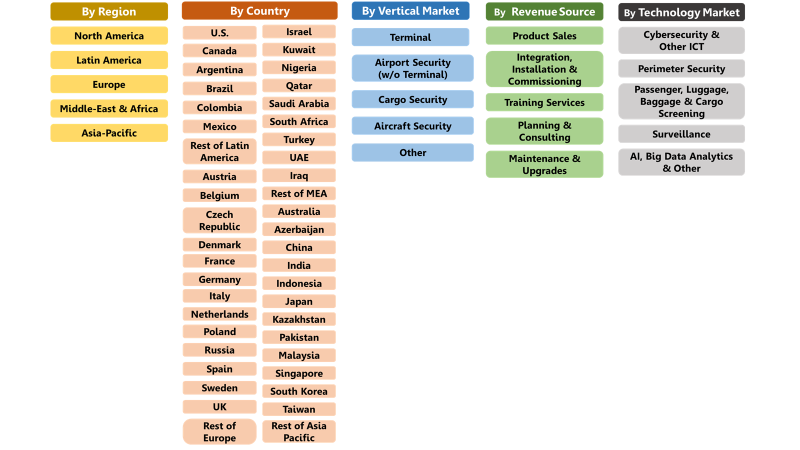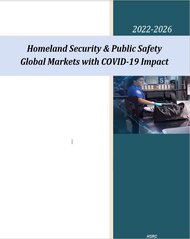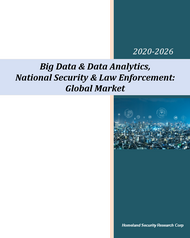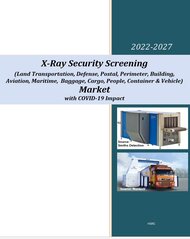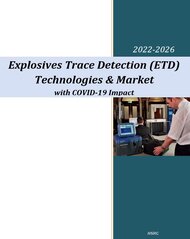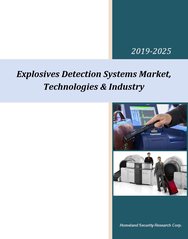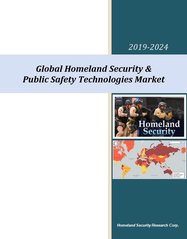Download TOC as PDF
3 Volumes:
Global Aviation Security Market – 2020-2025: Volume 1
Global Aviation Security Market – 2020-2025: Volume 2
Global Aviation Security Market – 2020-2025: Volume 3
Global Aviation Security Market – 2020-2025: Volume 1
Download the PDF
1 Executive Summary. 11
1.1 Key Findings & Conclusions. 11
1.2 Airports Passengers & Baggage Screening Statistics by Country – 2017 & 2025. 16
1.3 Global Aviation Security Market – 2018-2025. 17
1.3.1 Vertical Markets. 18
1.3.2 Technology Markets. 19
1.3.3 Market by Revenue Source. 20
1.3.4 Regional Markets. 20
1.3.5 National Markets. 22
2 Market Background & Scope. 23
2.1 Scope. 23
2.2 Market Background. 31
2.2.1 Aviation Security Terror Threats. 31
2.2.2 Aviation Security Tactics. 33
2.2.3 IATA Aviation’s Security Policy. 35
2.3 Aviation Security Technologies. 38
2.3.1 Airport Perimeter Security. 38
2.3.2 X-ray Screening. 39
2.3.3 Explosive Detection Systems (EDS) 40
2.3.4 Explosives Trace Detection (ETD) 41
2.3.5 Biological, Radioactive and Nuclear Detection.. 41
2.3.6 Millimeter Wave Imaging. 41
2.3.7 Canine Screening. 41
2.4 Aviation Security Market Demand Side. 42
2.4.1 Airports. 42
2.4.2 Airlines. 42
2.4.3 Freight Forwarders. 42
2.4.4 Customs. 43
2.4.5 Security Service Providers. 44
2.5 Aviation Passenger Screening Technologies Outlook: 2019-2025. 44
2.6 Checked Baggage Screening Market 46
2.7 Counter-MANPAD Market 46
2.8 Air Cargo Screening Technologies & Markets. 47
2.8.1 Air Cargo Security Process. 47
2.8.2 Air Cargo Related Security Risks. 51
2.8.3 Air-Cargo Supply Chain Security. 51
2.9 Airport Perimeter Security Technologies & Markets. 52
3 Aviation Security Market Drivers. 54
4 Aviation Security Market Inhibitors. 55
5 Aviation Security Market Business Opportunities & Challenges. 56
6 Aviation Security Market: SWOT Analysis. 58
7 Aviation Security Market Competitive Analysis. 59
VERTICAL MARKETS.. 60
8 Global Aviation Security Vertical Markets. 60
8.1 Aviation Security Market Size by Vertical Market – 2018-2025. 60
8.2 Aviation Security Market Dynamics – 2018-2025. 61
8.3 Global Market Share – 2018-2025. 62
9 Terminal Aviation Security Market – 2018-2025. 64
9.1 Terminal Aviation Security Market Background. 64
9.2 Global Terminal Aviation Security Market – 2018-2025. 64
9.2.1 Terminal Market – 2018-2025. 64
9.2.2 Terminal Aviation Security Market Dynamics – 2018-2025. 65
10 Airport Security (w/o Terminal) Market – 2018-2025. 66
10.1 Airport Security (w/o Terminal) Market Background. 66
10.2 Global Airport Security (w/o Terminal) Market – 2018-2025. 66
10.2.1 Airport Security (w/o Terminal) Market – 2018-2025. 66
10.2.2 Airport Security (w/o Terminal) Market Dynamics – 2018-2025. 67
11 Air Cargo Security Market – 2018-2025. 68
11.1 Air Cargo Security Market Background. 68
11.2 Global Air Cargo Security Market – 2018-2025. 68
11.2.1 Cargo Security Market – 2018-2025. 68
11.2.2 Cargo Security Market Dynamics – 2018-2025. 69
12 Aircraft Security Market – 2018-2025. 70
12.1 Aircraft Security Market Background. 70
12.2 Global Aircraft Security Market – 2018-2025. 70
12.2.1 Aircraft Security Market – 2018-2025. 70
12.2.2 Aircraft Security Market Dynamics – 2018-2025. 71
13 Other Aviation Security Markets– 2018-2025. 72
13.1 Other Aviation Security Markets Background. 72
13.2 Global Other Aviation Security Markets– 2018-2025. 72
13.2.1 Other Market – 2018-2025. 72
13.2.2 Other Aviation Security Markets Dynamics – 2018-2025. 73
TECHNOLOGY MARKETS.. 74
14 Global Aviation Security Technologies Markets. 74
14.1 Aviation Security Market Size by Technology Market – 2018-2025. 74
14.2 Aviation Security Technologies Market Dynamics – 2018-2025. 75
14.3 Global Market Share – 2018-2025. 76
15 Aviation Security Cybersecurity and Other ICT Markets – 2018-2025. 78
15.1 Aviation Security Cybersecurity and Other ICT Markets Background. 78
15.2 Global Aviation Security Cybersecurity and Other ICT Markets – 2018-2025 78
15.2.1 Cybersecurity and Other ICT Markets – 2018-2025. 78
15.2.2 Cybersecurity and Other ICT Markets Dynamics – 2018-2025. 79
16 Aviation Security Perimeter Security Market – 2018-2025. 80
16.1 Aviation Security Perimeter Security Market Background. 80
16.2 Global Aviation Security Perimeter Security Market – 2018-2025. 80
16.2.1 Perimeter Security Market – 2018-2025. 80
16.2.2 Perimeter Security Market Dynamics – 2018-2025. 81
17 Aviation Security Passenger, Luggage, Baggage & Cargo Screening Market – 2018-2025. 82
17.1 Aviation Security Passenger, Luggage, Baggage & Cargo Screening Market Background. 82
17.2 Global Aviation Security Passenger, Luggage, Baggage & Cargo Screening Market – 2018-2025. 82
17.2.1 Passenger, Luggage, Baggage & Cargo Screening Market – 2018-2025 82
17.2.2 Passenger, Luggage, Baggage & Cargo Screening Market Dynamics – 2018-2025. 83
18 Aviation Security Surveillance Market – 2018-2025. 84
18.1 Aviation Security Surveillance Market Background. 84
18.2 Global Aviation Security Surveillance Market – 2018-2025. 84
18.2.1 Surveillance Market – 2018-2025. 84
18.2.2 Surveillance Market Dynamics – 2018-2025. 85
19 Aviation Security AI, Big Data Analytics & Other Markets – 2018-2025. 86
19.1 Aviation Security AI, Big Data Analytics & Other Markets Background. 86
19.2 Global Aviation Security AI, Big Data Analytics & Other Markets – 2018-2025 86
19.2.1 AI, Big Data Analytics & Other Markets – 2018-2025. 86
19.2.2 AI, Big Data Analytics & Other Markets Dynamics – 2018-2025. 87
REVENUE SOURCE MARKETS.. 88
20 Global Aviation Security Market by Revenue Source. 88
20.1 Global Aviation Security Market – 2018-2025. 88
20.2 Aviation Security Market Dynamics – 2018-2025. 89
20.3 Global Aviation Security Market Share – 2018-2025. 90
REGIONAL MARKETS.. 92
21 Regional Aviation Security Markets. 92
21.1 Regional Markets – 2018-2025. 92
21.2 Regional Aviation Security Markets Dynamics – 2018-2025. 93
21.3 Global Market Share by Region – 2018-2025. 94
22 North America Aviation Security Market 95
22.1 North America Aviation Security Market – 2018-2025. 95
22.2 North America Aviation Security Market Dynamics – 2018-2025. 96
22.3 North America Market Share – 2018-2025. 97
23 South America Aviation Security Market 99
23.1 South America Aviation Security Market – 2018-2025. 99
23.2 South America Aviation Security Market Dynamics – 2018-2025. 100
23.3 South America Market Share – 2018-2025. 101
24 Europe Aviation Security Market 103
24.1 Europe Aviation Security Market – 2018-2025. 103
24.2 Europe Aviation Security Market Dynamics – 2018-2025. 104
24.3 Europe Market Share – 2018-2025. 105
25 Middle East & Africa Aviation Security Market 107
25.1 Middle East & Africa Aviation Security Market – 2018-2025. 107
25.2 Middle East & Africa Aviation Security Market Dynamics – 2018-2025. 108
25.3 Middle East & Africa Market Share – 2018-2025. 109
26 Asia-Pacific Aviation Security Market 111
26.1 Asia-Pacific Aviation Security Market – 2018-2025. 111
26.2 Asia-Pacific Aviation Security Market Dynamics – 2018-2025. 112
26.3 Asia-Pacific Market Share – 2018-2025. 113
[Back to top]
Global Aviation Security Market – 2020-2025: Volume 2
Download the PDF
NATIONAL MARKETS.. 27
1 National Aviation Security Markets. 27
1.1 National Markets – 2018-2025. 27
1.2 National Aviation Security Markets Dynamics – 2018-2025. 29
1.3 Global Market Share by Country – 2018-2025. 31
North America. 33
2 U.S. Aviation Security Market 33
2.1 U.S. Aviation Security Market Background. 33
2.2 U.S. Aviation Security Market – 2018-2025. 33
2.3 U.S. Aviation Security Market Dynamics – 2018-2025. 34
2.4 U.S. Market Share – 2018-2025. 35
3 Canada Aviation Security Market 36
3.1 Canada Aviation Security Market Background. 36
3.2 Canada Aviation Security Market – 2018-2025. 36
3.3 Canada Aviation Security Market Dynamics – 2018-2025. 37
3.4 Canada Market Share – 2018-2025. 38
Latin America. 39
4 Mexico Aviation Security Market 39
4.1 Mexico Aviation Security Market Background. 39
4.2 Mexico Aviation Security Market – 2018-2025. 39
4.3 Mexico Aviation Security Market Dynamics – 2018-2025. 40
4.4 Mexico Market Share – 2018-2025. 41
5 Colombia Aviation Security Market 42
5.1 Colombia Aviation Security Market Background. 42
5.2 Colombia Aviation Security Market – 2018-2025. 42
5.3 Colombia Aviation Security Market Dynamics – 2018-2025. 43
5.4 Colombia Market Share – 2018-2025. 44
6 Brazil Aviation Security Market 45
6.1 Brazil Aviation Security Market Background. 45
6.2 Brazil Aviation Security Market – 2018-2025. 45
6.3 Brazil Aviation Security Market Dynamics – 2018-2025. 46
6.4 Brazil Market Share – 2018-2025. 47
7 Argentina Aviation Security Market 48
7.1 Argentina Aviation Security Market Background. 48
7.2 Argentina Aviation Security Market – 2018-2025. 48
7.3 Argentina Aviation Security Market Dynamics – 2018-2025. 49
7.4 Argentina Market Share – 2018-2025. 50
8 Rest of Latin America Aviation Security Market 51
8.1 Rest of Latin America Aviation Security Market Background. 51
8.2 Rest of Latin America Aviation Security Market – 2018-2025. 51
8.3 Rest of Latin America Aviation Security Market Dynamics – 2018-2025 52
8.4 Rest of Latin America Market Share – 2018-2025. 53
Europe. 54
9 UK Aviation Security Market 54
9.1 UK Aviation Security Market Background. 54
9.2 UK Aviation Security Market – 2018-2025. 54
9.3 UK Aviation Security Market Dynamics – 2018-2025. 55
9.4 UK Market Share – 2018-2025. 56
10 France Aviation Security Market 57
10.1 France Aviation Security Market Background. 57
10.2 France Aviation Security Market – 2018-2025. 57
10.3 France Aviation Security Market Dynamics – 2018-2025. 58
10.4 France Market Share – 2018-2025. 59
11 Netherlands Aviation Security Market 60
11.1 Netherlands Aviation Security Market Background. 60
11.2 Netherlands Aviation Security Market – 2018-2025. 60
11.3 Netherlands Aviation Security Market Dynamics – 2018-2025. 61
11.4 Netherlands Market Share – 2018-2025. 62
12 Belgium Aviation Security Market 63
12.1 Belgium Aviation Security Market Background. 63
12.2 Belgium Aviation Security Market – 2018-2025. 63
12.3 Belgium Aviation Security Market Dynamics – 2018-2025. 64
12.4 Belgium Market Share – 2018-2025. 65
13 Sweden Aviation Security Market 66
13.1 Sweden Aviation Security Market Background. 66
13.2 Sweden Aviation Security Market – 2018-2025. 66
13.3 Sweden Aviation Security Market Dynamics – 2018-2025. 67
13.4 Sweden Market Share – 2018-2025. 68
14 Denmark Aviation Security Market 69
14.1 Denmark Aviation Security Market Background. 69
14.2 Denmark Aviation Security Market – 2018-2025. 69
14.3 Denmark Aviation Security Market Dynamics – 2018-2025. 70
14.4 Denmark Market Share – 2018-2025. 71
15 Germany Aviation Security Market 72
15.1 Germany Aviation Security Market Background. 72
15.2 Germany Aviation Security Market – 2018-2025. 72
15.3 Germany Aviation Security Market Dynamics – 2018-2025. 73
15.4 Germany Market Share – 2018-2025. 74
16 Austria Aviation Security Market 75
16.1 Austria Aviation Security Market Background. 75
16.2 Austria Aviation Security Market – 2018-2025. 75
16.3 Austria Aviation Security Market Dynamics – 2018-2025. 76
16.4 Austria Market Share – 2018-2025. 77
17 Italy Aviation Security Market 78
17.1 Italy Aviation Security Market Background. 78
17.2 Italy Aviation Security Market – 2018-2025. 78
17.3 Italy Aviation Security Market Dynamics – 2018-2025. 79
17.4 Italy Market Share – 2018-2025. 80
18 Spain Aviation Security Market 81
18.1 Spain Aviation Security Market Background. 81
18.2 Spain Aviation Security Market – 2018-2025. 81
18.3 Spain Aviation Security Market Dynamics – 2018-2025. 82
18.4 Spain Market Share – 2018-2025. 83
19 Poland Aviation Security Market 84
19.1 Poland Aviation Security Market Background. 84
19.2 Poland Aviation Security Market – 2018-2025. 84
19.3 Poland Aviation Security Market Dynamics – 2018-2025. 85
19.4 Poland Market Share – 2018-2025. 86
20 Czech Republic Aviation Security Market 87
20.1 Czech Republic Aviation Security Market Background. 87
20.2 Czech Republic Aviation Security Market – 2018-2025. 87
20.3 Czech Republic Aviation Security Market Dynamics – 2018-2025. 88
20.4 Czech Republic Market Share – 2018-2025. 89
21 Russia Aviation Security Market 90
21.1 Russia Aviation Security Market Background. 90
21.2 Russia Aviation Security Market – 2018-2025. 90
21.3 Russia Aviation Security Market Dynamics – 2018-2025. 91
21.4 Russia Market Share – 2018-2025. 92
22 Rest of Europe Aviation Security Market 93
22.1 Rest of Europe Aviation Security Market Background. 93
22.2 Rest of Europe Aviation Security Market – 2018-2025. 93
22.3 Rest of Europe Aviation Security Market Dynamics – 2018-2025. 94
22.4 Rest of Europe Market Share – 2018-2025. 95
Middle East & Africa. 96
23 Turkey Aviation Security Market 96
23.1 Turkey Aviation Security Market Background. 96
23.2 Turkey Aviation Security Market – 2018-2025. 96
23.3 Turkey Aviation Security Market Dynamics – 2018-2025. 97
23.4 Turkey Market Share – 2018-2025. 98
24 Israel Aviation Security Market 99
24.1 Israel Aviation Security Market Background. 99
24.2 Israel Aviation Security Market – 2018-2025. 99
24.3 Israel Aviation Security Market Dynamics – 2018-2025. 100
24.4 Israel Market Share – 2018-2025. 101
25 Saudi Arabia Aviation Security Market 102
25.1 Saudi Arabia Aviation Security Market Background. 102
25.2 Saudi Arabia Aviation Security Market – 2018-2025. 102
25.3 Saudi Arabia Aviation Security Market Dynamics – 2018-2025. 103
25.4 Saudi Arabia Market Share – 2018-2025. 104
26 UAE Aviation Security Market 105
26.1 UAE Aviation Security Market Background. 105
26.2 UAE Aviation Security Market – 2018-2025. 105
26.3 UAE Aviation Security Market Dynamics – 2018-2025. 106
26.4 UAE Market Share – 2018-2025. 107
27 Qatar Aviation Security Market 108
27.1 Qatar Aviation Security Market Background. 108
27.2 Qatar Aviation Security Market – 2018-2025. 108
27.3 Qatar Aviation Security Market Dynamics – 2018-2025. 109
27.4 Qatar Market Share – 2018-2025. 110
28 Kuwait Aviation Security Market 111
28.1 Kuwait Aviation Security Market Background. 111
28.2 Kuwait Aviation Security Market – 2018-2025. 111
28.3 Kuwait Aviation Security Market Dynamics – 2018-2025. 112
28.4 Kuwait Market Share – 2018-2025. 113
29 Nigeria Aviation Security Market 114
29.1 Nigeria Aviation Security Market Background. 114
29.2 Nigeria Aviation Security Market – 2018-2025. 114
29.3 Nigeria Aviation Security Market Dynamics – 2018-2025. 115
29.4 Nigeria Market Share – 2018-2025. 116
30 South Africa Aviation Security Market 117
30.1 South Africa Aviation Security Market Background. 117
30.2 South Africa Aviation Security Market – 2018-2025. 117
30.3 South Africa Aviation Security Market Dynamics – 2018-2025. 118
30.4 South Africa Market Share – 2018-2025. 119
31 Rest of MEA Aviation Security Market 120
31.1 Rest of MEA Aviation Security Market Background. 120
31.2 Rest of MEA Aviation Security Market – 2018-2025. 120
31.3 Rest of MEA Aviation Security Market Dynamics – 2018-2025. 121
31.4 Rest of MEA Market Share – 2018-2025. 122
Asia-Pacific. 123
32 India Aviation Security Market 123
32.1 India Aviation Security Market Background. 123
32.2 India Aviation Security Market – 2018-2025. 123
32.3 India Aviation Security Market Dynamics – 2018-2025. 124
32.4 India Market Share – 2018-2025. 125
33 China Aviation Security Market 126
33.1 China Aviation Security Market Background. 126
33.2 China Aviation Security Market – 2018-2025. 126
33.3 China Aviation Security Market Dynamics – 2018-2025. 127
33.4 China Market Share – 2018-2025. 128
34 South Korea Aviation Security Market 129
34.1 South Korea Aviation Security Market Background. 129
34.2 South Korea Aviation Security Market – 2018-2025. 129
34.3 South Korea Aviation Security Market Dynamics – 2018-2025. 130
34.4 South Korea Market Share – 2018-2025. 131
35 Japan Aviation Security Market 132
35.1 Japan Aviation Security Market Background. 132
35.2 Japan Aviation Security Market – 2018-2025. 132
35.3 Japan Aviation Security Market Dynamics – 2018-2025. 133
35.4 Japan Market Share – 2018-2025. 134
36 Australia Aviation Security Market 135
36.1 Australia Aviation Security Market Background. 135
36.2 Australia Aviation Security Market – 2018-2025. 135
36.3 Australia Aviation Security Market Dynamics – 2018-2025. 136
36.4 Australia Market Share – 2018-2025. 137
37 Azerbaijan Aviation Security Market 138
37.1 Azerbaijan Aviation Security Market Background. 138
37.2 Azerbaijan Aviation Security Market – 2018-2025. 138
37.3 Azerbaijan Aviation Security Market Dynamics – 2018-2025. 139
37.4 Azerbaijan Market Share – 2018-2025. 140
38 Kazakhstan Aviation Security Market 141
38.1 Kazakhstan Aviation Security Market Background. 141
38.2 Kazakhstan Aviation Security Market – 2018-2025. 141
38.3 Kazakhstan Aviation Security Market Dynamics – 2018-2025. 142
38.4 Kazakhstan Market Share – 2018-2025. 143
39 Pakistan Aviation Security Market 144
39.1 Pakistan Aviation Security Market Background. 144
39.2 Pakistan Aviation Security Market – 2018-2025. 144
39.3 Pakistan Aviation Security Market Dynamics – 2018-2025. 145
39.4 Pakistan Market Share – 2018-2025. 146
40 Taiwan Aviation Security Market 147
40.1 Taiwan Aviation Security Market Background. 147
40.2 Taiwan Aviation Security Market – 2018-2025. 147
40.3 Taiwan Aviation Security Market Dynamics – 2018-2025. 148
40.4 Taiwan Market Share – 2018-2025. 149
41 Singapore Aviation Security Market 150
41.1 Singapore Aviation Security Market Background. 150
41.2 Singapore Aviation Security Market – 2018-2025. 150
41.3 Singapore Aviation Security Market Dynamics – 2018-2025. 151
41.4 Singapore Market Share – 2018-2025. 152
42 Malaysia Aviation Security Market 153
42.1 Malaysia Aviation Security Market Background. 153
42.2 Malaysia Aviation Security Market – 2018-2025. 153
42.3 Malaysia Aviation Security Market Dynamics – 2018-2025. 154
42.4 Malaysia Market Share – 2018-2025. 155
43 Indonesia Aviation Security Market 156
43.1 Indonesia Aviation Security Market Background. 156
43.2 Indonesia Aviation Security Market – 2018-2025. 156
43.3 Indonesia Aviation Security Market Dynamics – 2018-2025. 157
43.4 Indonesia Market Share – 2018-2025. 158
44 Rest of Asia Pacific Aviation Security Market 159
44.1 Rest of Asia Pacific Aviation Security Market Background. 159
44.2 Rest of Asia Pacific Aviation Security Market – 2018-2025. 159
44.3 Rest of Asia Pacific Aviation Security Market Dynamics – 2018-2025. 160
44.4 Rest of Asia Pacific Market Share – 2018-2025. 161
VENDORS
45 Major Vendors. 162
45.1 3i-MIND.. 162
45.1.1 Company Profile. 162
45.1.2 Contact Info. 163
45.2 3M.. 163
45.2.1 Company Profile. 163
45.2.2 Contact Info. 164
45.3 3VR.. 165
45.3.1 Company Profile. 165
45.3.2 Contact Info. 165
45.4 3xLOGIC.. 166
45.4.1 Company Profile. 166
45.4.2 Contact Info. 166
45.5 ABB.. 167
45.5.1 Company Profile. 167
45.5.2 Contact Info. 168
45.6 Accenture. 169
45.6.1 Company Profile. 169
45.6.2 Contact Info. 170
45.7 ACTi Corporation.. 170
45.7.1 Company Profile. 170
45.7.2 Contact Info. 170
45.8 ADANI 171
45.8.1 Company Profile. 171
45.8.2 Contact Info. 171
45.9 ADT Security Services. 172
45.9.1 Company Profile. 172
45.9.2 Contact Info. 172
45.10 AeroVironment Inc. 173
45.10.1 Company Profile. 173
45.10.2 Contact Info. 173
45.11 Agent Video Intelligence. 174
45.11.1 Company Profile. 174
45.11.2 Contact Info. 174
45.12 Airbus Defence and Space. 175
45.12.1 Company Profile. 175
45.12.2 Contact Info. 176
45.13 Alcatel-Lucent (Nokia Group) 176
45.13.1 Company Profile. 176
45.13.2 Contact Info. 177
45.14 ALPHAOPEN.. 178
45.14.1 Company Profile. 178
45.14.2 Contact Info. 178
45.15 Anixter 178
45.15.1 Company Profile. 178
45.15.2 Contact Info. 179
45.16 Appealing Products, Inc. (API) / ChemSee. 180
45.16.1 Company Profile. 180
45.16.2 Contact Info. 180
45.17 Aralia Systems. 181
45.17.1 Company Profile. 181
45.17.2 Contact Info. 181
45.18 AT&T Inc. 182
45.18.1 Company Profile. 182
45.18.2 Contact Info. 182
45.19 Augusta Systems. 184
45.19.1 Company Profile. 184
45.19.2 Contact Info. 184
45.20 Austal 186
45.20.1 Company Profile. 186
45.20.2 Contact Info. 186
45.21 Auto Clear 187
45.21.1 Company Profile. 187
45.21.2 Contact Info. 188
45.22 Avigilon Corporation.. 189
45.22.1 Company Profile. 189
45.22.2 Contact Info. 190
45.23 Aware. 191
45.23.1 Company Profile. 191
45.23.2 Contact Info. 191
45.24 Axis. 192
45.24.1 Company Profile. 192
45.24.2 Contact Info. 192
45.25 AxxonSoft 194
45.25.1 Company Profile. 194
45.25.2 Contact Info. 194
45.26 Ayonix. 195
45.26.1 Company Profile. 195
45.26.2 Contact Info. 195
45.27 BAE Systems. 196
45.27.1 Company Profile. 196
45.27.2 Contact Info. 196
45.28 BAHIA Corp (Sibel Ltd.) 197
45.28.1 Company Profile. 197
45.28.2 Contact Info. 197
45.29 BioEnable Technologies Pvt Ltd. 198
45.29.1 Company Profile. 198
45.29.2 Contact Info. 198
45.30 BioLink Solutions. 199
45.30.1 Company Profile. 199
45.30.2 Contact Info. 199
45.31 Biosensor Applications. 200
45.31.1 Company Profile. 200
45.31.2 Contact Info. 200
45.32 Boeing. 201
45.32.1 Company Profile. 201
45.32.2 Contact Info. 202
45.33 Bollinger Shipyards, Inc. 202
45.33.1 Company Profile. 202
45.33.2 Contact Info. 202
45.34 Bosch Security Systems. 203
45.34.1 Company Profile. 203
45.34.2 Contact Info. 203
45.35 Brijot Imaging Systems. 204
45.35.1 Company Profile. 204
45.35.2 Contact Info. 204
45.36 Bruker Corporation.. 205
45.36.1 Company Profile. 205
45.36.2 Contact Info. 205
45.37 BT. 206
45.37.1 Company Profile. 206
45.37.2 Contact Info. 207
45.38 Camero. 207
45.38.1 Company Profile. 207
45.38.2 Contact Info. 208
45.39 Cassidian.. 208
45.39.1 Company Profile. 208
45.39.2 Contact Info. 208
45.40 CEIA.. 210
45.40.1 Company Profile. 210
45.40.2 Contact Info. 210
45.41 CelPlan.. 211
45.41.1 Company Profile. 211
45.41.2 Contact Info. 211
45.42 China Security & Surveillance, Inc. 212
45.42.1 Company Profile. 212
45.42.2 Contact Info. 212
45.43 Cisco Systems. 213
45.43.1 Company Profile. 213
45.43.2 Contact Info. 213
45.44 Citilog. 214
45.44.1 Company Profile. 214
45.44.2 Contact Info. 214
45.45 Cognitec Systems GmbH.. 216
45.45.1 Company Profile. 216
45.45.2 Contact Info. 216
45.46 Computer Network Limited (CNL) 217
45.46.1 Company Profile. 217
45.46.2 Contact Info. 217
45.47 Computer Sciences Corporation.. 218
45.47.1 Company Profile. 218
45.47.2 Contact Info. 219
45.48 CrossMatch.. 220
45.48.1 Company Profile. 220
45.48.2 Contact Info. 220
45.49 DetectaChem LLC.. 221
45.49.1 Company Info. 221
45.49.2 Contact Info. 221
45.50 Diebold. 222
45.50.1 Company Profile. 222
45.50.2 Contact Info. 222
45.51 DRS Technologies Inc. 223
45.51.1 Company Profile. 223
45.51.2 Contact Info. 223
45.52 DVTel 224
45.52.1 Company Profile. 224
45.52.2 Contact Info. 224
45.53 Elbit Systems Ltd. 225
45.53.1 Company Profile. 225
45.53.2 Contact Info. 225
45.54 Elsag Datamat 226
45.54.1 Company Profile. 226
45.54.2 Contact Info. 226
45.55 Emerson Electric. 226
45.55.1 Company Profile. 227
45.55.2 Contact Info. 228
45.56 Ericsson.. 228
45.56.1 Company Profile. 228
45.56.2 Contact Info. 229
45.57 ESRI 229
45.57.1 Company Profile. 229
45.57.2 Contact Info. 230
45.58 FaceFirst 230
45.58.1 Company Profile. 230
45.58.2 Contact Info. 231
45.59 Finmeccanica SpA.. 232
45.59.1 Company Profile. 232
45.59.2 Contact Info. 232
45.60 Firetide. 233
45.60.1 Company Profile. 233
45.60.2 Contact Info. 233
45.61 Fisher Labs. 234
45.61.1 Company Profile. 234
45.61.2 Contact Info. 234
45.62 Flir Systems. 234
45.62.1 Company Profile. 234
45.62.2 Contact Info. 235
45.63 Fulcrum Biometrics LLC.. 235
45.63.1 Company Profile. 235
45.63.2 Contact Info. 236
45.64 G4S.. 236
45.64.1 Company Profile. 236
45.64.2 Contact Info. 237
45.65 General Atomics Aeronautical Systems Inc. 237
45.65.1 Company Profile. 237
45.65.2 Contact Info. 238
45.66 General Dynamics Corporation.. 238
45.66.1 Company Profile. 238
45.66.2 Contact Info. 239
45.67 Getac Technology Corporation.. 240
45.67.1 Company Profile. 240
45.67.2 Contact Info. 240
45.68 Gilardoni SpA.. 241
45.68.1 Company Profile. 241
45.68.2 Contact Info. 241
45.69 Hanwha Techwin. 242
45.69.1 Company Profile. 242
45.69.2 Contact Info. 243
45.70 Harris Corporation.. 244
45.70.1 Company Profile. 244
45.70.2 Contact Info. 244
45.71 Hewlett Packard Enterprise. 245
45.71.1 Company Profile. 245
45.71.2 Contact Info. 246
45.72 Hexagon AB.. 246
45.72.1 Company Profile. 246
45.72.2 Contact Info. 246
45.73 Hitachi 248
45.73.1 Company Profile. 248
45.73.2 Contact Info. 248
45.74 Honeywell International Inc. 249
45.74.1 Company Profile. 249
45.74.2 Contact Info. 250
45.75 Huawei Technologies Co., Ltd. 251
45.75.1 Company Profile. 251
45.75.2 Contact Info. 251
45.76 IBM.. 252
45.76.1 Company Profile. 252
45.76.2 Contact Info. 252
45.77 IndigoVision. 253
45.77.1 Company Profile. 253
45.77.2 Contact Info. 253
45.78 Intel Security. 254
45.78.1 Company Profile. 254
45.78.2 Contact Info. 254
45.79 IntuVision Inc. 255
45.79.1 Company Profile. 255
45.79.2 Contact Info. 255
45.80 iOmniscient 256
45.80.1 Company Profile. 256
45.80.2 Contact Info. 256
45.81 Ion Applications Inc. 257
45.81.1 Company Info. 257
45.81.2 Contact Info. 257
45.82 IPConfigure. 258
45.82.1 Company Profile. 258
45.82.2 Contact Info. 258
45.83 IPS Intelligent Video Analytics. 259
45.83.1 Company Profile. 259
45.83.2 Contact Info. 259
45.84 Iris ID Systems, Inc. 259
45.84.1 Company Profile. 259
45.84.2 Contact Info. 260
45.85 IriTech Inc. 261
45.85.1 Company Profile. 261
45.85.2 Contact Info. 261
45.86 Israel Aerospace Industries Ltd. 262
45.86.1 Company Profile. 262
45.86.2 Contact Info. 263
45.87 ISS.. 264
45.87.1 Company Profile. 264
45.87.2 Contact Info. 264
45.88 Ketech Defence. 265
45.88.1 Company Profile. 265
45.88.2 Contact Info. 265
45.89 L-3 Security & Detection Systems. 266
45.89.1 Company Profile. 266
45.89.2 Contact Info. 267
45.90 Leidos, Inc. 268
45.90.1 Company Profile. 268
45.90.2 Contact Info. 269
45.91 LIXI, Inc. 269
45.91.1 Company Profile. 269
45.91.2 Contact Info. 270
45.92 Lockheed Martin Corporation.. 271
45.92.1 Company Profile. 271
45.92.2 Contact Info. 272
45.93 MACROSCOP.. 273
45.93.1 Company Profile. 273
45.93.2 Contact Info. 273
45.94 MDS.. 273
45.94.1 Company Profile. 273
45.94.2 Contact Info. 274
45.95 Mer group. 274
45.95.1 Company Profile. 274
45.95.2 Contact Info. 275
45.96 Milestone Systems A/S.. 276
45.96.1 Company Profile. 276
45.96.2 Contact Info. 276
45.97 MilliVision. 277
45.97.1 Company Profile. 277
45.97.2 Contact Info. 277
45.98 INXRAY, Inc. 278
45.98.1 Company Profile. 278
45.98.2 Contact Info. 278
45.99 Mirasys. 279
45.99.1 Company Profile. 279
45.99.2 Contact Info. 279
45.100 Mistral Security Inc. 280
45.100.1 Company Profile. 280
45.100.2 Contact Info. 280
45.101 Motorola Solutions, Inc. 281
45.101.1 Company Profile. 281
45.101.2 Contact Info. 282
45.102 National Instruments. 283
45.102.1 Company Profile. 283
45.102.2 Contact Info. 283
45.103 NEC Corporation.. 284
45.103.1 Company Profile. 284
45.103.2 Contact Info. 285
45.104 NICE Systems. 286
45.104.1 Company Profile. 286
45.104.2 Contact Info. 286
45.105 Northrop Grumman Corporation.. 287
45.105.1 Company Profile. 287
45.105.2 Contact Info. 288
45.106 Nuance Communications, Inc. 289
45.106.1 Company Profile. 289
45.106.2 Contact Info. 290
45.107 Nuctech Co. Ltd. 291
45.107.1 Company Profile. 291
45.107.1 Contact Info. 291
45.108 ObjectVideo. 292
45.108.1 Company Profile. 292
45.108.2 Contact Info. 292
45.109 Panasonic Corporation.. 293
45.109.1 Company Profile. 293
45.109.2 Contact Info. 294
45.110 Pelco. 294
45.110.1 Company Profile. 294
45.110.2 Contact Info. 295
45.111 Pivot3. 295
45.111.1 Company Profile. 295
45.111.2 Contact Info. 295
45.112 Proximex. 296
45.112.1 Company Profile. 296
45.112.2 Contact Info. 296
45.113 QinetiQ Limited. 297
45.113.1 Company Profile. 297
45.113.2 Contact Info. 298
45.114 Rapiscan Systems, Inc. 298
45.114.1 Company Profile. 298
45.114.2 Contact Info. 299
45.115 Raytheon.. 300
45.115.1 Company Profile. 300
45.115.2 Contact Info. 301
45.116 Red X Defense. 302
45.116.1 Company Profile. 302
45.116.2 Contact Info. 302
45.117 Rockwell Collins, Inc. 303
45.117.1 Company Profile. 303
45.117.2 Contact Info. 304
45.118 Safran S.A. 305
45.118.1 Company Profile. 305
45.118.2 Contact Info. 306
45.119 Salient Sciences. 306
45.119.1 Company Profile. 306
45.119.2 Contact Info. 306
45.120 Scanna MSC Ltd. 307
45.120.1 Company Profile. 307
45.120.2 Contact Info. 307
45.121 Scent Detection Technologies. 308
45.121.1 Company Profile. 308
45.121.2 Contact Info. 308
45.122 Schneider Electric. 309
45.122.1 Company Profile. 309
45.122.2 Contact Info. 309
45.123 Scintrex Trace. 310
45.123.1 Company Profile. 310
45.123.2 Contact Info. 310
45.124 SeeTec. 310
45.124.1 Company Profile. 310
45.124.2 Contact Info. 311
45.125 Siemens. 311
45.125.1 Company Profile. 311
45.125.2 Contact Info. 312
45.126 Smart China (Holdings) Limited. 312
45.126.1 Company Profile. 313
45.126.2 Contact Info. 313
45.127 Smiths Detection Inc. 314
45.127.1 Company Profile. 314
45.127.2 Contact Info. 315
45.128 Sony Corp. 316
45.128.1 Company Profile. 316
45.128.2 Contact Info. 316
45.129 Speech Technology Center 317
45.129.1 Company Profile. 317
45.129.2 Contact Info. 317
45.130 Suprema Inc. 318
45.130.1 Company Profile. 318
45.130.2 Contact Info. 318
45.131 Syagen Technology. 319
45.131.1 Company Profile. 319
45.131.2 Contact Info. 319
45.132 Synectics Plc. 320
45.132.1 Company Profile. 320
45.132.2 Contact Info. 320
45.133 Tandu Technologies & Security Systems Ltd. 321
45.133.1 Company Profile. 321
45.133.2 Contact Info. 321
45.134 TeraView.. 322
45.134.1 Company Profile. 322
45.134.2 Contact Info. 322
45.135 Texas Instruments. 323
45.135.1 Company Profile. 323
45.135.2 Contact Info. 323
45.136 Textron Inc. 324
45.136.1 Company Profile. 324
45.136.2 Contact Info. 324
45.137 Thales Group. 325
45.137.1 Company Profile. 325
45.137.2 Contact Info. 326
45.138 Thermo Electron Corporation.. 327
45.138.1 Company Profile. 327
45.138.2 Contact Info. 327
45.139 ThruVision Systems. 328
45.139.1 Company Profile. 328
45.139.2 Contact Info. 328
45.140 Total Recall 329
45.140.1 Company Profile. 329
45.140.2 Contact Info. 330
45.141 Unisys Corporation.. 331
45.141.1 Company Profile. 331
45.141.2 Contact Info. 332
45.142 Verint 333
45.142.1 Company Profile. 333
45.142.2 Contact Info. 333
45.143 Vialogy LLC.. 335
45.143.1 Company Profile. 335
45.143.2 Contact Info. 335
45.144 Vidisco Ltd. 336
45.144.1 Company Profile. 336
45.144.2 Contact Info. 336
45.145 Vigilant Technology. 337
45.145.1 Company Profile. 337
45.145.2 Contact Info. 337
45.146 Westminster International Ltd. 338
45.146.1 Company Profile. 338
45.146.2 Contact Info. 338
45.147 Zhejiang Dahua Technology. 339
45.147.1 Company Profile. 339
45.147.2 Contact Info. 339
[Back to top]
Global Aviation Security Market – 2020-2025: Volume 3
Download the PDF
APPENDICES
- Appendix A – National Markets Background.. 28
1.1. U.S. Aviation Security Market Background. 28
1.1.1. Facts & Figures. 28
1.1.2. U.S. Public Safety & Homeland Security: Introduction.. 28
1.1.3. Crime in the U.S. 33
1.1.4. Terror in the U.S. 33
1.1.5. U.S. Federal Homeland Security Related Organizations. 34
1.1.5.1. Department of Homeland Security (DHS) 36
1.1.5.2. Department of Homeland Security: Agencies and Units. 38
1.1.5.3. DHS – Transportation Security Administration (TSA) 40
1.1.5.4. DHS – U.S. Customs & Border Protection (CBP) 42
1.1.5.5. DHS – Federal Emergency Management Agency (FEMA) 42
1.1.5.6. DHS – U.S. Immigration & Customs Enforcement (ICE) 43
1.1.5.7. DHS – U.S. Coast Guard (USCG) 43
1.1.5.8. U.S. Secret Service (USSS) 44
1.1.5.9. DHS – Science & Technology Directorate (S&T) 44
1.1.5.10. DHS – Domestic Nuclear Detection Office (DNDO) 45
1.1.5.11. DHS – U.S. Citizenship & Immigration Services (USCIS) 46
1.1.5.12. DHS – National Protection and Programs Directorate (NPPD) 47
1.1.5.13. Department of Defense (DOD) 48
1.1.5.14. Department of Justice (DOJ) 48
1.1.5.15. Federal Bureau of Investigation (FBI) 50
1.1.5.16. Department of State (DOS) 51
1.1.5.17. National Aeronautic & Space Administration (NASA) 52
1.1.5.18. Department of Transportation (DOT) 53
1.1.5.19. Department of Commerce (DOC) 53
1.1.6. U.S. Police Forces. 54
1.1.7. U.S. Airports Security. 55
1.1.7.1. Air Passengers Checkpoint CCTV Support Program.. 62
1.1.7.2. CCTV Assisted Secure Flight Program.. 62
1.1.8. U.S. Land Border Security. 63
1.1.8.1. Introduction.. 63
1.1.8.2. U.S. Land Border Security Components. 65
1.1.8.3. Southwest Border 65
1.1.8.4. Northern Border 66
1.1.8.5. Trusted Traveler, Expedited Clearance and Other Partnerships 67
1.1.9. U.S. Critical Infrastructure Security. 67
1.1.9.1. Scope. 67
1.1.9.2. Major Findings. 69
1.1.9.3. Critical Infrastructure Security Tactics. 71
1.1.9.4. Critical Infrastructure Vulnerabilities. 71
1.1.9.5. Planning of Infrastructure Security. 72
1.1.9.6. Critical Infrastructure Strategy Outlook. 73
1.1.9.7. Information Sharing with the Private Sector 73
1.1.9.8. Food and Agro-Terror Market Outlook. 74
1.1.9.9. CIP Terror Mitigation Outlook. 76
1.1.10. U.S. Maritime Security. 78
1.1.10.1. Scope. 78
1.1.10.2. Major Findings & Conclusions. 79
1.1.10.3. Maritime Security Infrastructure. 81
1.1.10.4. Port Critical Infrastructure Operations. 82
1.1.10.5. The Container Security Initiative (CSI) 84
1.1.11. U.S. Land Transportation Security. 84
1.1.11.1. Scope. 84
1.1.11.2. Land Transportation Security: Background. 85
1.1.11.3. Mass Transit Security. 86
1.1.12. U.S. Energy Sector Security. 87
1.1.12.1. Scope. 87
1.1.12.2. U.S. Energy Sector Security: Background. 87
1.1.13. U.S. Public Events Security. 89
1.1.13.1. Scope. 89
1.1.13.2. U.S. Natural & Manmade Disaster Mitigation.. 89
1.2. Canada Aviation Security Market Background. 92
1.2.1. Facts & Figures. 92
1.2.2. Canada Geopolitical Overview.. 92
1.2.3. Crime in Canada. 93
1.2.4. Terror in Canada. 93
1.2.5. Canada Counter Terror & Law Enforcement Legislation.. 94
1.2.6. Canada’s Homeland Security & Public Safety Agencies. 95
1.2.7. Canada’s Police Forces. 95
1.2.8. Canada’s Security Intelligence Services. 95
1.2.9. Canada’s Defense Forces. 96
1.2.10. Canada Airport Security. 97
1.2.11. Canada Border Security. 98
1.3. Mexico Aviation Security Market Background. 99
1.3.1. Facts & Figures. 99
1.3.2. Mexico Geopolitical Overview.. 99
1.3.3. Mexico Homeland Security & Public Safety Industry. 99
1.3.4. Crime in Mexico. 103
1.3.5. Terror in Mexico. 104
1.3.6. Mexico Counter Terror Legislation & Law Enforcement 105
1.3.7. Mexico’s Homeland Security & Public Safety Agencies. 106
1.3.8. Mexico’s Police Forces. 106
1.3.9. Mexico’s Intelligence Services. 107
1.3.9.1. Center for Research and National Security. 108
1.3.9.2. Secretariat of National Defense. 108
1.3.10. Mexico’s Defense Forces. 108
1.3.11. Mexico: Safe City Projects. 110
1.3.11.1. Mexico Urban Crime and Insurgency. 110
1.3.11.2. Security Policy. 110
1.3.11.3. Mexico-City: Safe City. 111
1.3.11.4. Mexico-City Safe City Future Expansion. 112
1.3.12. Mexico Airport Security. 113
1.4. Colombia Aviation Security Market Background. 115
1.4.1. Facts & Figures. 115
1.4.2. Colombia Geopolitical Overview.. 115
1.4.3. Colombia Homeland Security & Public Safety Industry. 116
1.4.4. Crime in Colombia. 117
1.4.5. Terror in Colombia. 117
1.4.6. Colombia Counter Terror Legislation & Law Enforcement 118
1.4.7. Colombia’s Homeland Security & Public Safety Agencies. 119
1.4.7.1. UNP.. 119
1.4.8. Colombia’s Police Forces. 119
1.4.9. Colombia’s Intelligence Services. 119
1.4.10. Colombia’s Defense Forces. 120
1.4.11. Colombia Airport Security. 121
1.5. Brazil Aviation Security Market Background. 122
1.5.1. Facts & Figures. 122
1.5.2. Brazil Geopolitical Overview.. 122
1.5.3. Brazil Homeland Security & Public Safety Industry. 124
1.5.4. Crime in Brazil 125
1.5.5. Terror in Brazil 126
1.5.6. Brazil Counter Terror Legislation & Law Enforcement 127
1.5.7. Brazil’s Homeland Security & Public Safety Agencies. 127
1.5.8. Brazil’s Police Forces. 128
1.5.9. Brazil’s Intelligence Services. 128
1.5.9.1. ABIN.. 128
1.5.10. Brazil’s Defense Forces. 129
1.5.11. Brazil: Safe City Projects. 129
1.5.12. Brazil Airport Security. 131
1.5.13. Brazil Border Security. 132
1.6. Argentina Aviation Security Market Background. 134
1.6.1. Facts & Figures. 134
1.6.2. Argentina Geopolitical Overview.. 134
1.6.3. Argentina Homeland Security & Public Safety Industry. 134
1.6.4. Crime in Argentina. 135
1.6.5. Terror in Argentina. 136
1.6.6. Argentina Counter Terror Legislation & Law Enforcement 136
1.6.7. Argentina’s Homeland Security & Public Safety Agencies. 137
1.6.8. Argentina’s Police Forces. 138
1.6.9. Argentina’s Intelligence Services. 138
1.6.9.1. AFI 138
1.6.10. Argentina’s Defense Forces. 138
1.6.11. Argentina Airport Security. 139
1.6.12. Argentina Border Security. 140
1.7. UK Aviation Security Market Background. 142
1.7.1. Facts & Figures. 142
1.7.2. UK Geopolitical Overview.. 142
1.7.3. The Brexit Effects. 143
1.7.4. UK Homeland Security & Public Safety: Market Background. 144
1.7.5. UK National Security Risk Assessment 2018. 148
1.7.6. Crime in the UK.. 149
1.7.7. Terror in the UK.. 149
1.7.7.1. The New Realities of Terror 150
1.7.7.2. The United Kingdom Counter Terror Strategy. 154
1.7.7.3. Countering International Terrorism.. 155
1.7.7.4. UK Homeland Security and Public Safety Strategy. 155
1.7.8. UK Counter Terror & Law Enforcement Legislation.. 156
1.7.8.1. Countering Terrorism Financing. 157
1.7.8.2. UK Intelligence Agencies Funding. 159
1.7.8.3. 2018 Counter Terror Policy Transformation.. 159
1.7.8.4. UK Public Safety Challenges. 160
1.7.9. UK’s Homeland Security & Public Safety Agencies. 161
1.7.10. UK Police Forces. 161
1.7.10.1. UK Police Forces Statistics. 163
1.7.11. UK Intelligence Services. 164
1.7.11.1. Security Service – MI5. 164
1.7.11.2. National Domestic Extremism & Disorder Intelligence Unit (NDEDIU) 165
1.7.11.3. National Crime Agency (NCA) 165
1.7.11.4. National Ballistics Intelligence Service (NABIS) 166
1.7.11.5. National Fraud Intelligence Bureau (NFIB) 166
1.7.11.6. MI6, Secret Intelligence Service. 166
1.7.11.7. Defense Intelligence (DI) 166
1.7.11.8. Government Communications Headquarters (GCHQ) 167
1.7.11.9. The Joint Intelligence Organization.. 167
1.7.11.10. The Parliament Intelligence and Security Committee. 168
1.7.11.11. National Security Secretariat (NSS) 168
1.7.11.12. Office for Security and Counter-Terrorism (OSCT) 169
1.7.11.13. UK Intelligence Agencies Budgets. 169
1.7.12. UK Defense Forces. 169
1.7.13. UK Safe City Projects. 169
1.7.13.1. Urban Security. 169
1.7.13.2. UK Security Policy. 170
1.7.13.3. Urban Crime Data. 170
1.7.13.4. UK Safe City Projects: Introduction.. 171
1.7.13.5. Case 1: London – A Safe City. 172
1.7.13.6. Case 2: Glasgow – A Safe City. 172
1.7.14. UK Airport Security. 173
1.7.15. UK Border Security. 174
1.7.15.1. Overview.. 174
1.7.15.2. Migration to the UK.. 175
1.7.15.3. UK Home Office Border Force. 177
1.7.15.4. UK Immigration Data. 177
1.7.15.5. Migration from Eastern Europe. 178
1.7.15.6. UK 2018 Immigration Data. 179
1.7.15.7. UK Immigration Legislation.. 180
1.7.15.8. Points-Based Migration.. 180
1.7.15.9. Automated Border Control (ABC) Gates. 181
1.7.15.10. Immigration Enforcement 183
1.7.15.11. UK-France Eurotunnel 183
1.8. Germany Aviation Security Market Background. 185
1.8.1. Facts & Figures. 185
1.8.2. Germany Geopolitical Overview.. 185
1.8.3. Germany: Economy, Immigration & Terror 186
1.8.4. Germany Homeland Security & Public Safety Industry: Background 193
1.8.5. Crime in Germany. 194
1.8.6. Terror in Germany. 194
1.8.7. Germany Counter Terror Legislation & Law Enforcement 195
1.8.8. Germany Terror Challenge & Counter Terror Strategy. 197
1.8.8.1. The New Realities of Terror 197
1.8.8.2. Germany Approach to Homeland Security and Public Safety. 204
1.8.8.3. 2015-2018 Germany Migration Surge. 205
1.8.8.4. German Asylum and Refugee Status. 206
1.8.9. Germany’s Homeland Security & Public Safety Agencies. 208
1.8.10. Germany’s Police Forces. 208
1.8.10.1. BPOL – Federal Police. 208
1.8.10.2. GSG 9 – Special Operations & Counterterrorism Unit 209
1.8.10.3. BFE/BFHu Units – Special Anti-Terrorist Unit of Federal Anti-Riot Police 209
1.8.10.4. ASSIK – Special Task Force Protection in Crisis Areas. 210
1.8.10.5. ZKA – Customs Investigation Bureau.. 210
1.8.10.6. ZUZ – Customs SWAT Unit 210
1.8.10.7. Military Police. 210
1.8.10.8. State Police Forces. 211
1.8.10.9. SEK – State Special Operations Command Part of Uniformed Police 211
1.8.10.10. MEK – Mobile Task Force units, Part of Criminal Police. 212
1.8.11. Germany’s Intelligence Services. 212
1.8.11.1. Federal Intelligence Service (BND) 212
1.8.11.2. Federal Office for the Protection of the Constitution (BfV) 212
1.8.11.3. Military Counterintelligence Service (MAD) 213
1.8.11.4. The State Office for the Protection of the Constitution. 214
1.8.12. Germany’s Defense Forces. 214
1.8.13. Germany Safe City. 214
1.8.13.1. Urban Crime in Germany. 214
1.8.13.2. Germany: Safe City Projects. 215
1.8.13.3. Safe City Project in Stuttgart 216
1.8.13.4. German Safe City Market Eco-System.. 216
1.8.14. Germany Airport Security. 219
1.8.15. Germany Border Security. 220
1.8.15.1. Market-Background. 220
1.8.15.2. Germany Visa Policy. 222
1.8.15.3. German E-Passport 222
1.8.15.4. Immigration Legislation.. 223
1.8.15.5. Immigration Enforcement 223
1.8.15.6. Border Security. 224
1.8.15.7. German Coast Guard. 225
1.8.15.8. Automated Border Control (ABC) Gates. 225
1.9. France Aviation Security Market Background. 228
1.9.1. Facts & Figures. 228
1.9.2. France Geopolitical Overview.. 228
1.9.3. France Homeland Security & Public Safety Industry. 228
1.9.4. Crime in France. 229
1.9.5. Terror in France. 230
1.9.6. France Terror Threats & Counter Terror Strategy. 240
1.9.6.1. The New Realities of Terror 240
1.9.6.2. Recent Terror Attacks and the Islamist Threat 243
1.9.6.3. 2015-2018 Counter Terror Policy Transformation.. 243
1.9.6.4. Threat Levels. 244
1.9.7. French Anti-Terror Legislation.. 244
1.9.8. France’s Homeland Security & Public Safety Agencies. 249
1.9.9. France’s Police Forces. 250
1.9.9.1. The National Police. 250
1.9.9.2. Research, Assistance, Intervention, Deterrence (RAID) 251
1.9.9.3. National Police Intervention Groups (GIPN) 251
1.9.9.4. Paris Police Prefecture. 251
1.9.9.5. The Municipal Police. 252
1.9.9.6. The National Gendarmerie. 252
1.9.9.7. National Gendarmerie Intervention Group. 252
1.9.9.8. Police Forces Statistics. 253
1.9.10. France’s Intelligence Services. 254
1.9.10.1. Domestic Counter-terrorism & Counter-espionage Intelligence (DGSI) 254
1.9.10.2. Central Directorate of the Judicial Police (DCPJ) 254
1.9.10.3. General Directorate for External Security (DGSE) 255
1.9.10.4. Directorate of Protection and Defense Security (DPSD) 255
1.9.10.5. Directorate of Military Intelligence (DRM) 256
1.9.10.6. Anti-Terrorist Bureau (BLAT) 256
1.9.10.7. Inter-Departmental Coordination on Terrorism Matters. 256
1.9.11. France’s Defense Forces. 257
1.9.12. France: Safe City Projects. 258
1.9.13. France Airport Security. 259
1.9.14. France Border Security. 261
1.9.14.1. Migration to France. 263
1.9.14.2. The Calais “Migrant Crisis” 264
1.9.14.3. France Immigration Data. 265
1.9.14.4. France Visa Policy. 266
1.9.14.5. Short Stay Visas. 266
1.9.14.6. Long Stays in France. 267
1.9.14.7. Asylum in France. 267
1.9.14.8. France E-Passport 267
1.9.14.9. France Immigration Legislation.. 268
1.9.14.10. Automated Border Control (ABC) Gates. 268
1.9.14.11. Automated Passport Control Gates in France. 270
1.10. Spain Aviation Security Market Background. 271
1.10.1. Facts & Figures. 271
1.10.2. Spain Geopolitical Overview.. 271
1.10.3. Spain Homeland Security & Public Safety Industry. 272
1.10.4. Crime in Spain.. 274
1.10.5. Terror in Spain.. 274
1.10.6. Spain Counter Terror Legislation & Law Enforcement 275
1.10.7. Spain’s Homeland Security & Public Safety Agencies. 276
1.10.8. Spain’s Police Forces. 276
1.10.8.1. The Spanish National Police. 276
1.10.8.2. The Spanish Civil Guard. 277
1.10.9. Spain’s Intelligence Services. 278
1.10.9.1. The National Intelligence Center (CNI) 278
1.10.9.2. The Armed Forces Intelligence Center (CIFAS) 279
1.10.9.3. Intelligence Center Against Terrorism and Organized Crime (CITCO) 279
1.10.9.4. Commissariat General of Information (CGI) 280
1.10.10. Spain’s Defense Forces. 281
1.10.11. Spain: Safe City Projects. 281
1.10.12. Spain Airport Security. 285
1.11. Italy Aviation Security Market Background. 286
1.11.1. Facts & Figures. 286
1.11.2. Italy Geopolitical Overview.. 286
1.11.3. Italy Homeland Security & Public Safety Industry. 287
1.11.4. Crime in Italy. 289
1.11.5. Terror in Italy. 290
1.11.6. Italy Counter Terror Legislation & Law Enforcement 291
1.11.7. Italy’s Homeland Security & Public Safety Agencies. 292
1.11.8. Italy’s Police Forces. 293
1.11.9. Italy’s Intelligence Services. 295
1.11.9.1. Internal Information and Security Agency (AISI) 295
1.11.9.2. External Intelligence and Security Agency (AISE) 295
1.11.9.3. Department of Information for Security (DIS) 296
1.11.9.4. Interministerial Committee for the Security of the Republic (CISR) 296
1.11.10. Italy’s Defense Forces. 297
1.11.11. Italy: Safe City Projects. 297
1.11.12. Italy Airport Security. 299
1.11.13. Italy Border Security. 300
1.12. Poland Aviation Security Market Background. 303
1.12.1. Facts & Figures. 303
1.12.2. Poland Geopolitical Overview.. 303
1.12.3. Poland Homeland Security & Public Safety Industry. 303
1.12.4. Crime in Poland. 304
1.12.5. Terror in Poland. 304
1.12.6. Poland Counter Terror Legislation & Law Enforcement 305
1.12.7. Poland’s Homeland & Public Safety Agencies. 305
1.12.8. Poland’s Police Forces. 305
1.12.9. Poland’s Intelligence Services. 307
1.12.10. Poland’s Defense Forces. 307
1.12.11. Poland: Safe City Projects. 308
1.12.12. Poland Airport Security. 308
1.12.13. Poland Border Security. 309
1.13. Russia Aviation Security Market Background. 310
1.13.1. Facts & Figures. 310
1.13.2. Russia Geopolitical Overview.. 310
1.13.3. Russia Homeland Security & Public Safety Industry. 311
1.13.4. Crime in Russia. 312
1.13.5. Terror in Russia. 313
1.13.6. Russia Counter Terror Legislation & Law Enforcement 313
1.13.7. Russia’s Homeland Security & Public Safety Agencies. 315
1.13.8. Russia’s Police Forces. 316
1.13.9. Russia’s Intelligence Services. 316
1.13.10. Russia’s Defense Forces. 317
1.13.11. Russia Airport Security. 318
1.13.12. Russia Border Security. 320
1.14. Sweden Aviation Security Market Background. 321
1.14.1. Facts & Figures. 321
1.14.2. Sweden Geopolitical Overview.. 321
1.14.3. Sweden Homeland Security & Public Safety Industry. 321
1.14.4. Crime in Sweden.. 322
1.14.5. Terror in Sweden.. 322
1.14.6. Sweden Counter Terror Legislation & Law Enforcement 323
1.14.7. Sweden’s Homeland Security & Public Safety Agencies. 323
1.14.8. Sweden’s Police Forces. 324
1.14.9. Sweden’s Defense Forces. 324
1.14.10. Sweden’s Intelligence Services. 325
1.14.11. Sweden: Safe City Projects. 325
1.14.12. Sweden Airport Security. 326
1.15. Denmark Aviation Security Market Background. 327
1.15.1. Facts & Figures. 327
1.15.2. Denmark Geopolitical Overview.. 327
1.15.3. Denmark Homeland Security & Public Safety Industry. 327
1.15.4. Crime in Denmark. 328
1.15.5. Terror in Denmark. 328
1.15.6. Denmark Counter Terror Legislation & Law Enforcement 329
1.15.7. Denmark’s Police Forces. 330
1.15.8. Denmark’s Intelligence Services. 331
1.15.9. Denmark’s Defense Forces. 331
1.15.10. Denmark Airport Security. 332
1.16. Netherlands Aviation Security Market Background. 333
1.16.1. Facts & Figures. 333
1.16.2. Netherlands Geopolitical Overview.. 333
1.16.3. Netherlands Homeland Security & Public Safety Industry. 333
1.16.4. Crime in the Netherlands. 334
1.16.5. Terror in the Netherlands. 334
1.16.6. Netherlands Counter Terror Legislation & Law Enforcement 335
1.16.7. Netherlands Homeland Security & Public Safety Agencies. 336
1.16.8. Netherlands Police Forces. 336
1.16.9. Netherlands Intelligence Services. 337
1.16.10. Netherlands Defense Forces. 337
1.16.11. Netherlands: Safe City Projects. 337
1.16.12. Netherlands Airport Security. 338
1.16.13. Netherlands Border Security. 338
1.17. Belgium Aviation Security Market Background. 338
1.17.1. Facts & Figures. 338
1.17.2. Belgium Geopolitical Overview.. 339
1.17.3. Belgium Homeland Security & Public Safety Industry. 339
1.17.4. Crime in Belgium.. 341
1.17.5. Terror in Belgium.. 341
1.17.5.1. Overview.. 341
1.17.5.2. Terror Attacks Statistics. 348
1.17.6. Belgium Counter Terror Legislation & Law Enforcement 352
1.17.7. Belgium’s Homeland Security & Public Safety Agencies. 356
1.17.8. Belgium’s Police Forces. 356
1.17.8.1. Belgian Federal Police. 357
1.17.8.2. Belgium’s Local Police Forces. 357
1.17.9. Belgium’s Intelligence Services. 358
1.17.9.1. Overview.. 358
1.17.9.2. State Security Service. 359
1.17.9.3. General Information and Security Service. 359
1.17.10. Belgium’s Defense Forces. 359
1.17.11. Belgium: Safe City Projects. 359
1.17.11.1. The Private Sector Public Events Security. 361
1.17.11.2. Communication Interoperability. 361
1.17.12. Belgium Airport Security. 362
1.17.13. Belgium Border Security. 362
1.17.13.1. Market-Background. 362
1.17.13.2. Migration to Belgium.. 363
1.17.13.3. Belgium Immigration Data. 364
1.17.13.4. Belgium Visa Policy. 365
1.17.13.5. Belgian E-Passport 365
1.17.13.6. Belgium Immigration Legislation.. 365
1.17.13.7. Automated Border Control (ABC) Gates. 365
1.17.13.8. Belgium’s Automated Passport Control Gates. 367
1.17.14. Immigration Enforcement 367
1.18. Austria Aviation Security Market Background. 370
1.18.1. Facts & Figures. 370
1.18.2. Austria Homeland Security & Public Safety Industry. 370
1.18.3. Crime in Austria. 370
1.18.4. Terror in Austria. 371
1.18.5. Austria Counter Terror Legislation & Law Enforcement 371
1.18.6. Austria’s Homeland Security & Public Safety Agencies. 372
1.18.7. Austria’s Police Forces. 372
1.18.8. Austria’s Intelligence Services. 372
1.18.9. Austria’s Defense Forces. 372
1.18.10. Austria Airport Security. 373
1.19. Czech Republic Aviation Security Market Background. 374
1.19.1. Facts & Figures. 374
1.19.2. Czech Republic Geopolitical Overview.. 374
1.19.3. Czech Republic Homeland Security & Public Safety Industry. 374
1.19.4. Crime in the Czech Republic. 375
1.19.5. Terror in the Czech Republic. 375
1.19.6. Czech Republic Counter Terror Legislation & Law Enforcement 375
1.19.7. Czech Republic’s Police Forces. 375
1.19.8. Czech Republic’s Intelligence Services. 376
1.19.9. Czech Republic’s Defense Forces. 376
1.19.10. Czech Republic Airport Security. 376
1.20. Turkey Aviation Security Market Background. 377
1.20.1. Facts & Figures. 377
1.20.2. Turkey Economy. 377
1.20.3. Turkey Geopolitical Overview.. 378
1.20.4. Turkey Homeland Security & Public Safety Market 379
1.20.5. Crime in Turkey. 380
1.20.6. Terror in Turkey. 381
1.20.7. Turkey Counter Terror Legislation & Law Enforcement 383
1.20.8. Turkey’s Homeland Security & Public Safety Agencies. 385
1.20.9. Turkey’s Police Forces. 385
1.20.10. Turkey’s Intelligence Services. 386
1.20.10.1. The National Intelligence Organization (MIT) 386
1.20.11. Turkey’s Defense Forces. 387
1.20.12. Turkey Airport Security. 387
1.20.13. Turkey Border Security. 389
1.21. Israel Aviation Security Market Background. 391
1.21.1. Facts & Figures. 391
1.21.2. Israel Geopolitical Overview.. 391
1.21.3. Israel Homeland Security & Public Safety Market 393
1.21.4. Crime in Israel 395
1.21.5. Terror in Israel 395
1.21.6. Israel Counter Terror Legislation & Law Enforcement 398
1.21.7. Israel’s Homeland Security & Public Safety Agencies. 398
1.21.8. Israel’s Police Forces. 399
1.21.9. Israel’s Intelligence Services. 400
1.21.9.1. Military Intelligence Directorate (Aman) 400
1.21.9.2. Mossad. 400
1.21.9.3. The Israeli Security Agency (ISA/Shin Bet/Shabak) 401
1.21.10. Israel’s Defense Forces. 401
1.21.11. Israel’s Safe City Projects. 402
1.21.11.1. The Israeli Safe City and Safe Municipalities National Smart Alert System.. 405
1.21.12. Israel Airport Security. 408
1.21.13. Israel Border Security. 408
1.22. Saudi Arabia Aviation Security Market Background. 409
1.22.1. Facts & Figures. 409
1.22.2. Saudi Arabia Geopolitical Overview.. 409
1.22.3. Saudi Arabia Homeland Security & Public Safety Market 413
1.22.4. Crime in Saudi Arabia. 413
1.22.5. Terror in Saudi Arabia. 413
1.22.6. Saudi Arabia Counter Terror Legislation & Law Enforcement 414
1.22.7. Saudi Arabia’s Homeland Security & Public Safety Agencies. 415
1.22.7.1. Ministry of Interior 419
1.22.7.2. Saudi National Guard. 419
1.22.7.3. Paramilitary Security Forces. 420
1.22.8. Saudi Arabia’s Police Forces. 421
1.22.9. Saudi Arabia’s Intelligence Services. 421
1.22.9.1. General Intelligence Presidency (GIP) 421
1.22.9.2. General Investigation Directorate (GID or Mabahith) 422
1.22.9.3. Saudi Arabia’s Defense Forces. 422
1.22.9.4. Armed Services. 422
1.22.9.5. Independent Forces. 423
1.22.10. Saudi Arabia’s Safe City Projects. 423
1.22.10.1. Saudi Arabia – 34 Ongoing and Future Safe Cities Projects. 427
1.22.10.2. The Hajj Safe City Strategy. 427
1.22.11. Saudi Arabia Airport Security. 428
1.22.12. Saudi Arabia Border Security. 428
1.23. Iraq Aviation Security Market Background. 429
1.23.1. Facts & Figures. 429
1.23.2. Iraq Geopolitical Overview.. 429
1.23.3. Iraq Economy. 431
1.23.4. Crime in Iraq. 432
1.23.5. Terror in Iraq. 433
1.23.6. Iraq Counter Terror Legislation & Law Enforcement 434
1.23.6.1. Counter Terror Market 434
1.23.7. Iraq’s Homeland Security & Public Safety Agencies. 435
1.23.8. Iraq’s Police Forces. 436
1.23.9. Iraq’s Intelligence Services. 437
1.23.9.1. Iraqi National Intelligence Service (INIS) 437
1.23.10. Iraq’s Defense Forces. 437
1.23.10.1. Iraqi Army. 438
1.23.10.2. Iraqi Air Force. 438
1.23.10.3. Iraqi Navy. 438
1.23.10.4. Iraqi Special Operations Forces. 438
1.23.10.5. Iraqi Defense Forces Market 2017-2020. 439
1.23.10.6. Intelligence Surveillance and Reconnaissance (ISR) 439
1.23.10.7. Army Modernization.. 440
1.23.10.8. Army Aviation Upgrades. 440
1.23.10.9. Air Force Modernization.. 441
1.23.10.10. Naval Capabilities Upgrade. 441
1.23.10.11. Air Defense Command. 442
1.23.11. Iraq Airport Security. 442
1.23.12. Iraq Border Security. 443
1.24. UAE Aviation Security Market Background. 445
1.24.1. Facts & Figures. 445
1.24.2. UAE Geopolitical Overview.. 445
1.24.3. UAE Homeland Security & Public Safety Market 446
1.24.4. Crime in the UAE.. 451
1.24.5. Terror in the UAE.. 451
1.24.6. UAE Counter Terror Legislation & Law Enforcement 452
1.24.7. UAE’s Homeland Security & Public Safety Agencies. 454
1.24.8. UAE’s Police Forces. 454
1.24.9. UAE’s Intelligence Services. 457
1.24.10. UAE’s Defense Forces. 457
1.24.10.1. Military Contribution Abroad. 457
1.24.11. UAE’s Safe City Projects. 458
1.24.12. UAE Airport Security. 460
1.24.13. UAE Border Security. 460
1.25. Qatar Aviation Security Market Background. 461
1.25.1. Facts & Figures. 461
1.25.2. Qatar Geopolitical Overview.. 461
1.25.3. Qatar Homeland Security & Public Safety Market 462
1.25.4. Crime in Qatar 464
1.25.5. Terror in Qatar 466
1.25.6. Qatar Counter Terror Legislation & Law Enforcement 466
1.25.7. Qatar’s Police Forces. 467
1.25.8. Qatar’s Intelligence Services. 468
1.25.9. Qatar’s Defense Forces. 469
1.25.10. Qatar’s Safe City Projects. 470
1.25.11. Qatar Airport Security. 470
1.25.12. Qatar Border Security. 471
1.26. Kuwait Aviation Security Market Background. 472
1.26.1. Facts & Figures. 472
1.26.2. Kuwait Geopolitical Overview.. 472
1.26.3. Kuwait Homeland Security & Public Safety Market 474
1.26.4. Crime in Kuwait 474
1.26.5. Terror in Kuwait 475
1.26.6. Kuwait Counter Terror Legislation & Law Enforcement 475
1.26.7. Kuwait’s Homeland Security & Public Safety Agencies. 476
1.26.8. Kuwait’s Police Forces. 476
1.26.9. Kuwait’s Intelligence Services. 477
1.26.10. Kuwait’s Defense Forces. 477
1.26.11. Kuwait’s Safe City Projects. 478
1.26.12. Kuwait Airport Security. 479
1.26.13. Kuwait Border Security. 480
1.27. Nigeria Aviation Security Market Background. 481
1.27.1. Facts & Figures. 481
1.27.2. Nigeria Geopolitical Overview.. 481
1.27.3. Nigeria Homeland Security & Public Safety Market 482
1.27.4. Crime in Nigeria. 483
1.27.5. Terror in Nigeria. 484
1.27.6. Nigeria Counter Terror Legislation & Law Enforcement 485
1.27.7. Nigeria’s Homeland Security & Public Safety Agencies. 487
1.27.8. Nigeria’s Police Forces. 487
1.27.8.1. Nigeria Police Force (NPF) 487
1.27.8.2. Other Departments. 489
1.27.8.3. Other Sections. 490
1.27.9. Nigeria’s Defense Forces. 490
1.27.10. Nigeria Airport Security. 491
1.27.11. Nigeria Border Security. 491
1.28. South Africa Aviation Security Market Background. 493
1.28.1. Facts & Figures. 493
1.28.2. South Africa Geopolitical Overview.. 493
1.28.3. Crime in South Africa. 495
1.28.4. Terror in South Africa. 496
1.28.5. South Africa Counter Terror Legislation & Law Enforcement 497
1.28.6. South Africa’s Homeland Security & Public Safety Agencies. 498
1.28.7. South Africa’s Police Forces. 498
1.28.8. South Africa’s Intelligence Services. 499
1.28.9. South Africa’s Defense Forces. 500
1.28.10. South Africa Airport Security. 501
1.28.11. South Africa Border Security. 501
1.29. India Aviation Security Market Background. 502
1.29.1. Facts & Figures. 502
1.29.2. India Geopolitical Overview.. 502
1.29.3. India Homeland Security & Public Safety Market 503
1.29.4. Crime in India. 505
1.29.4.1. Crime in New Delhi 505
1.29.4.2. Crime in Mumbai 506
1.29.4.3. Crime in Hyderabad. 506
1.29.5. Terror in India. 507
1.29.6. India Counter Terror Legislation & Law Enforcement 507
1.29.7. India’s Homeland Security & Public Safety Agencies. 508
1.29.8. India’s Police Forces. 508
1.29.9. India’s Defense Market 509
1.29.10. India’s Intelligence Services. 513
1.29.10.1. Intelligence Bureau (IB) 513
1.29.10.2. Research and Analysis Wing (RAW) 513
1.29.11. India’s Defense Forces. 514
1.29.12. India’s Safe City Projects. 515
1.29.13. India Airport Security. 516
1.29.14. India Border Security. 517
1.30. China Aviation Security Market Background. 520
1.30.1. Facts & Figures. 520
1.30.2. China Geopolitical Overview.. 521
1.30.3. China Economy. 522
1.30.4. China: Security Threat Assessment 525
1.30.5. China’s Security Industry. 526
1.30.6. China Homeland Security & Public Safety Market 529
1.30.7. Crime in China. 530
1.30.8. Terror in China. 531
1.30.9. China Counter Terror Legislation & Law Enforcement 532
1.30.10. China’s Homeland Security & Public Safety Agencies. 534
1.30.10.1. National Security Commission of the Communist Party of China (CNSC) 534
1.30.10.2. The 610 Office. 535
1.30.10.3. China’s Ministry of Public Security. 538
1.30.10.4. China’s Public Security Bureau.. 538
1.30.10.5. China’s Ministry of State Security. 539
1.30.11. China’s Police Forces. 540
1.30.12. China’s Intelligence Services. 541
1.30.13. China’s Defense Forces. 541
1.30.14. Natural Disasters in China. 546
1.30.15. China’s Safe City Projects. 547
1.30.15.1. China Public Security. 547
1.30.15.2. China Urbanization Plan. 547
1.30.15.3. China Safe Cities Market 548
1.30.15.4. China’s 200 Largest Safe City Projects. 549
1.30.16. China Airport Security. 551
1.30.17. China Border Security. 557
1.31. South Korea Aviation Security Market Background. 558
1.31.1. Facts & Figures. 558
1.31.2. South Korea Geopolitical Overview.. 558
1.31.3. South Korea Homeland Security & Public Safety Market 561
1.31.4. Crime in South Korea. 562
1.31.5. Terror in South Korea. 562
1.31.6. South Korea’s Homeland Security & Public Safety Agencies. 563
1.31.7. South Korea’s Police Forces. 564
1.31.8. South Korea’s Intelligence Services. 564
1.31.8.1. National Intelligence Service (NIS) 564
1.31.9. South Korea’s Defense Forces. 565
1.31.10. South Korea’s Safe City Projects. 565
1.31.11. South Korea Airport Security. 567
1.31.12. South Korea Border Security. 567
1.32. Japan Aviation Security Market Background. 568
1.32.1. Facts & Figures. 568
1.32.2. Japan Geopolitical Overview.. 568
1.32.3. Japan Homeland Security & Public Safety Market 570
1.32.4. Crime in Japan.. 571
1.32.5. Terror in Japan.. 571
1.32.6. Japan’s Homeland Security & Public Safety Agencies. 572
1.32.7. Japan’s Police Forces. 572
1.32.8. Japan’s Intelligence Services. 573
1.32.8.1. Public Security Intelligence Agency (PSIA) 573
1.32.8.2. Intelligence and Analysis Service. 573
1.32.9. Japan’s Defense Forces. 573
1.32.10. Japan’s Safe City Projects. 574
1.32.11. Natural Disasters in Japan.. 575
1.32.12. Japan Airport Security. 577
1.32.13. Japan Border Security. 579
1.33. Australia Aviation Security Market Background. 581
1.33.1. Facts & Figures. 581
1.33.2. Australia Geopolitical Overview.. 581
1.33.3. External Security. 581
1.33.4. Crime in Australia. 582
1.33.5. Terror in Australia. 583
1.33.6. Australia Counter Terror Legislation & Law Enforcement 584
1.33.7. Australia’s Homeland Security & Public Safety Agencies. 585
1.33.8. Australia’s Police Forces. 587
1.33.9. Australia’s Intelligence Services. 587
1.33.9.1. Australian Security Intelligence Organization (ASIO) 587
1.33.9.2. Australian Secret Intelligence Service (ASIS) 588
1.33.9.3. Office of National Intelligence (ONI) 588
1.33.10. Australia’s Defense Forces. 589
1.33.11. Australia’s Safe City Projects. 590
1.33.11.1. Overview.. 590
1.33.11.2. Melbourne – A Safe City. 590
1.33.12. Natural Disasters. 591
1.33.13. Australia Airport Security. 592
1.33.14. Australia Border Security. 593
1.34. Azerbaijan Aviation Security Market Background. 594
1.34.1. Facts & Figures. 594
1.34.2. Azerbaijan Geopolitical Overview.. 594
1.34.3. Azerbaijan Homeland Security & Public Safety Market 595
1.34.4. Crime in Azerbaijan.. 596
1.34.5. Terror in Azerbaijan.. 597
1.34.6. Azerbaijan Counter Terror Legislation & Law Enforcement 597
1.34.7. Azerbaijan’s Homeland Security & Public Safety Agencies. 598
1.34.8. Azerbaijan’s Police Forces. 598
1.34.9. Azerbaijan’s Intelligence Services. 599
1.34.10. Azerbaijan’s Defense Forces. 599
1.34.10.1. Internal Troops. 600
1.34.11. Azerbaijan Airport Security. 600
1.34.12. Azerbaijan Border Security. 601
1.35. Kazakhstan Aviation Security Market Background. 602
1.35.1. Facts & Figures. 602
1.35.2. Kazakhstan Geopolitical Overview.. 602
1.35.3. Crime in Kazakhstan.. 603
1.35.4. Terror in Kazakhstan.. 604
1.35.5. Kazakhstan Counter Terror Legislation & Law Enforcement 605
1.35.6. Kazakhstan’s Police Forces. 605
1.35.7. Kazakhstan’s Intelligence Services. 606
1.35.7.1. National Security Committee (NSC) 606
1.35.8. Kazakhstan’s Defense Forces. 606
1.35.9. Kazakhstan Airport Security. 607
1.35.10. Kazakhstan Border Security. 607
1.36. Pakistan Aviation Security Market Background. 608
1.36.1. Facts & Figures. 608
1.36.2. Pakistan Geopolitical Overview.. 608
1.36.3. Crime in Pakistan.. 609
1.36.4. Terror in Pakistan.. 609
1.36.5. Pakistan Counter Terror Legislation & Law Enforcement 610
1.36.5.1. National Counter Terrorism Authority (NACTA) 611
1.36.6. Pakistan’s Homeland Security & Public Safety Agencies. 612
1.36.7. Pakistan’s Police Forces. 612
1.36.8. Pakistan’s Intelligence Services. 614
1.36.8.1. Intelligence Bureau (IB) 614
1.36.8.2. Inter-Service Intelligence (ISI) 614
1.36.8.3. Federal Investigation Agency (FIA) 614
1.36.9. Pakistan’s Defense Forces. 615
1.36.10. Natural Disasters in Pakistan.. 616
1.36.11. Pakistan Airport Security. 617
1.36.12. Pakistan Border Security. 617
1.37. Taiwan Aviation Security Market Background. 619
1.37.1. Facts & Figures. 619
1.37.2. Taiwan Geopolitical Overview.. 619
1.37.3. Taiwan Homeland Security & Public Safety Market 619
1.37.4. Crime and Terror in Taiwan.. 620
1.37.5. Taiwan’s Homeland Security & Public Safety Agencies. 620
1.37.6. Taiwan’s Police Forces. 621
1.37.7. Taiwan’s Intelligence Services. 621
1.37.7.1. National Security Bureau (NSB) 621
1.37.8. Taiwan’s Defense Forces. 622
1.37.9. Taiwan Airport Security. 623
1.37.10. Taiwan Border Security. 623
1.38. Singapore Aviation Security Market Background. 625
1.38.1. Facts & Figures. 625
1.38.2. Singapore Geopolitical Overview.. 625
1.38.3. Singapore Homeland Security & Public Safety Market 625
1.38.4. Crime in Singapore. 626
1.38.5. Terror in Singapore. 627
1.38.6. Singapore’s Homeland Security & Public Safety Agencies. 628
1.38.7. Singapore’s Police Forces. 629
1.38.8. Singapore’s Intelligence Services. 629
1.38.8.1. Internal Security Department (ISD) 629
1.38.8.2. National Security Coordination Secretariat (NSCS) 630
1.38.9. Singapore’s Defense Forces. 630
1.38.10. Singapore Airport Security. 631
1.38.11. Singapore Border Security. 631
1.39. Malaysia Aviation Security Market Background. 632
1.39.1. Facts & Figures. 632
1.39.2. Malaysia Geopolitical Overview.. 632
1.39.3. Malaysia Homeland Security & Public Safety Market 633
1.39.4. Crime in Malaysia. 633
1.39.5. Terror in Malaysia. 634
1.39.6. Malaysia Counter Terror Legislation & Law Enforcement 635
1.39.7. Malaysia’s Homeland Security & Public Safety Agencies. 636
1.39.8. Malaysia’s Police Forces. 636
1.39.9. Malaysia’s Intelligence Services. 637
1.39.9.1. Special Branch (SB) 637
1.39.9.2. Research Division/Malaysian External Intelligence Organization (MEIO) 637
1.39.9.3. Royal Intelligence Corps. 637
1.39.10. Malaysia’s Defense Forces. 637
1.39.11. Malaysia Airport Security. 640
1.39.12. Malaysia Border Security. 641
1.40. Indonesia Aviation Security Market Background. 642
1.40.1. Facts & Figures. 642
1.40.2. Indonesia Geopolitical Overview.. 642
1.40.3. Indonesia Homeland Security & Public Safety Market 643
1.40.4. Crime in Indonesia. 644
1.40.5. Terror & Civil Unrest in Indonesia. 645
1.40.6. Indonesia Counter Terror Legislation & Law Enforcement 646
1.40.7. Indonesia’s Homeland Security & Public Safety Agencies. 648
1.40.8. Indonesia’s Police Forces. 649
1.40.9. Indonesia’s Intelligence Services. 649
1.40.9.1. Council for Maintaining Security & Legal System (DPKN) 649
1.40.9.2. Armed Forces Strategic Intelligence Agency (BAIS) 649
1.40.9.3. State Intelligence Agency (BIN) 650
1.40.10. Indonesia’s Defense Forces. 650
1.40.10.1. The Defense Market 650
1.40.11. Indonesia’s Safe City Projects. 651
1.40.12. Natural Disasters in Indonesia. 652
1.40.13. Indonesia Airport Security. 653
1.40.14. Indonesia Border Security. 654
- Appendix B : The Aviation Security Industry. 656
2.1. Mergers & Acquisitions (M&A) 656
2.2. Business Models & Strategies. 656
2.2.1. Variable Economic Conditions. 656
2.2.2. Aviation Security Market Entry Strategies. 656
2.2.3. Market Entry Challenges. 657
2.2.4. Supply-Side & Demand-Side Analysis. 658
2.2.5. Price Elasticity. 661
2.2.6. Aviation Security Vendor – Government Relationship. 663
- Appendix C: Aviation Security Related Product Standards. 666
- Appendix D: Abbreviations. 688
- Research Methodology. 700
5.1. Report Structure. 700
5.2. Research Methodology. 700
5.3. For Whom is this Report?. 701
- Disclaimer and Copyright 702

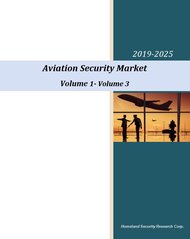


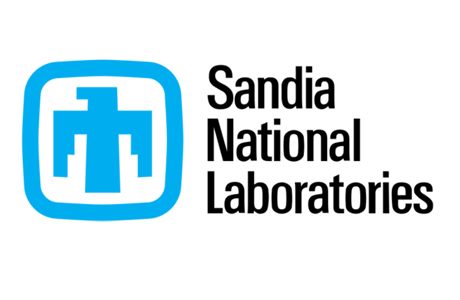
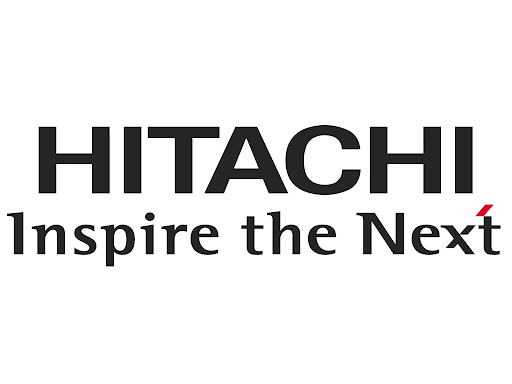
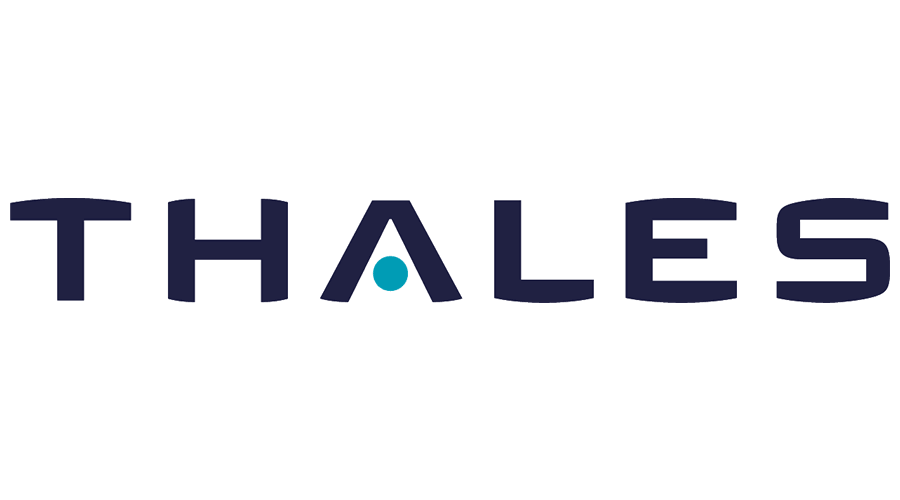



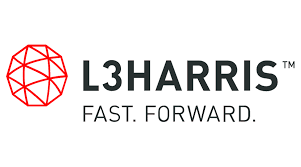

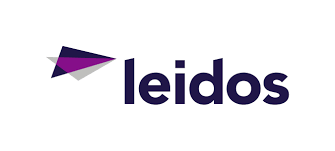
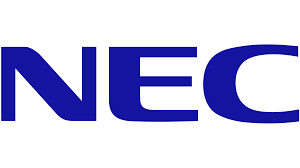






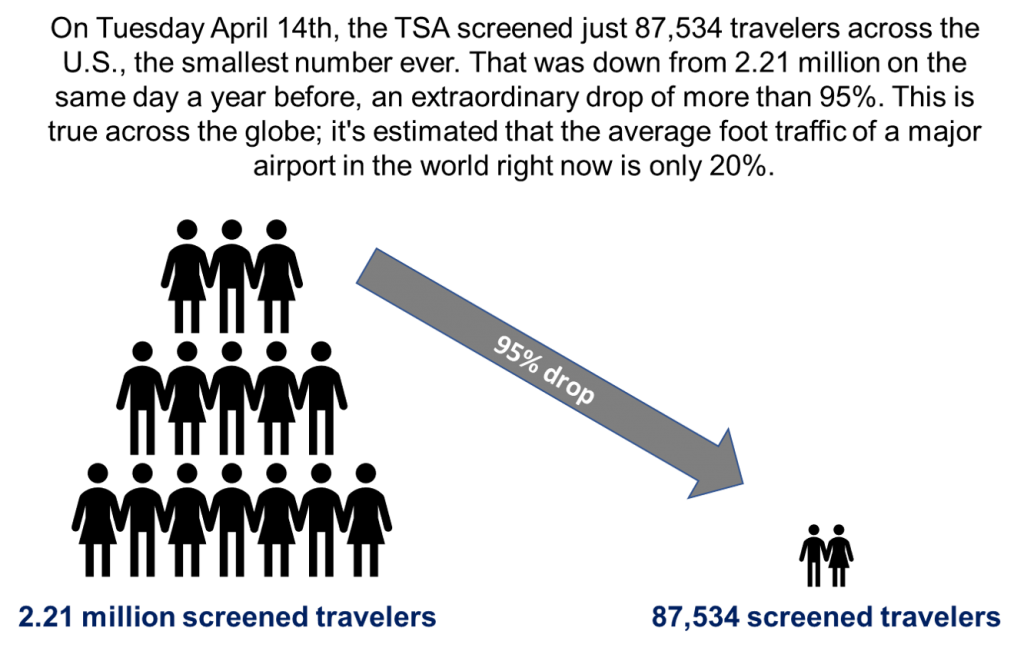
![Regional Aviation Security Market Shares [%] – 2018-2025](https://hsrc.biz/wp-content/uploads/2019/06/Regional-Aviation-Security-Market-Shares-–-2018-2025.png)
